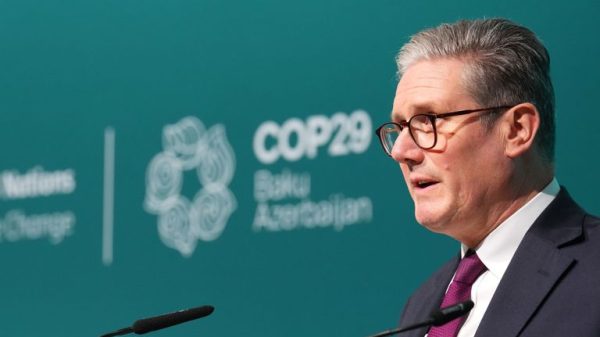Astronomers have identified a planet as light and fluffy as candy floss – despite being far bigger than our solar system’s gas giant Jupiter.
Scientists said WASP-193b is “basically super fluffy” because it has remarkably low density for its size.
It’s thought to consist mostly of hydrogen and helium, according to a study published in Nature Astronomy.
WASP-193b is the second least dense planet discovered by astronomers – but is proving a mystery to experts due to its size, which is around 50 per cent bigger than Jupiter.
“The planet is basically super fluffy” because it’s made mostly of light gases rather than solids, according to lead author Khalid Barkaoui of the Massachusetts Institute Of Technology (MIT).
More observational work will need to be carried out before astronomers can answer all the questions posed by its “fluffy” existence.
Scientists said WASP-193b, which some experts believe is so light it could float on water, is ideal for studying the formation and evolution of planets.
The existence of the exoplanet – those beyond our solar system – was confirmed last year, but it took extra time and work to determine its consistency based on observations from ground telescopes.
The planet is located outside of our solar system some 1,200 light years away – one light year is equal to 5.8 trillion miles – and orbits a star which is similar to the sun.
It is thought the heat from its nearby sun, which it orbits a little over every six days, could be making its atmosphere inflate.
The fluffy planet’s emergence comes days after researchers revealed there is a “super-Earth” located in our Milky Way galaxy.
The rocky world, called 55 Cancri e or Janssen, is situated around 41 light years from Earth and has a diameter of around twice that of our planet.
Renyu Hu, of NASA’s Jet Propulsion Laboratory and the lead author of the study published in the journal Nature, said: “The atmosphere is likely rich in carbon dioxide or carbon monoxide, but can also have other gases such as water vapour and sulphur dioxide.
“The current observations cannot pinpoint the exact atmospheric composition.”
The planet “cannot be habitable” because it is too hot to have liquid water, scientists added.



























